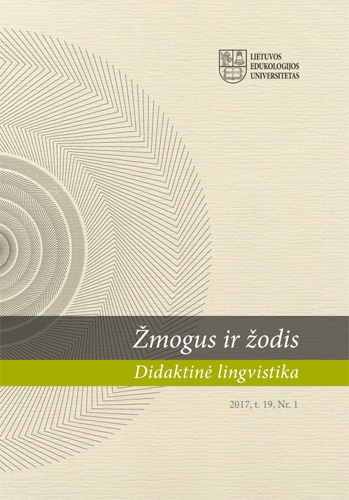Fonetinio rašybos principo realizacija S. Daukanto ankstyvojoje leksikografijoje
Realisation of Phonetic Orthography Principle in the Early Lexicography of S. Daukantas
Author(s): Birutė GudelienėSubject(s): Theoretical Linguistics, Phonetics / Phonology, Lexis, 19th Century
Published by: Vytauto Didžiojo Universitetas
Keywords: compound graphemes; use of graphemes; orthography of S. Daukantas; principles of writing;
Summary/Abstract: The data for the article were collected from Žodrodis (1838) by Simonas Daukantas with additional reference to the data of the headlines of Epitome Historiae Sacrae, hand-written dictionaries and the textbooks Prasmą łotinû kałbos (1837) and Abecieła lîjtuwiû-kalnienû ir źiamajtiû kałbos (1842) by S. Daukantas. The aim of the paper is to determine the prevailing orthography principle in the early lexicography of S. Daukantas irrespectively of the results of previous studies. In the article it is determined and specified that the greatest part of the orthography in the early lexicography of S. Daukantas is based on the phonetic orthography principle, which is related to the spelling of the root, although there are some instances of such spelling in inflections as well. The phonetic orthography principle is expressed through complex letters with diacritics and reflects various phonetic processes. The complex letters with diacritics were used to separate the Samogitian and Aukštaitian phonetics and also differentiated the quality of the Aukštaitian phonetics. The orthography was also influenced by the inhomogeneous tradition of spelling compound graphemes taken from the texts of Mikalojus Daukša and writers of Lithuania Minor, as well as developed by S. Daukantas himself.
Journal: Žmogus ir žodis
- Issue Year: 19/2017
- Issue No: 1
- Page Range: 50-56
- Page Count: 7
- Language: Lithuanian

